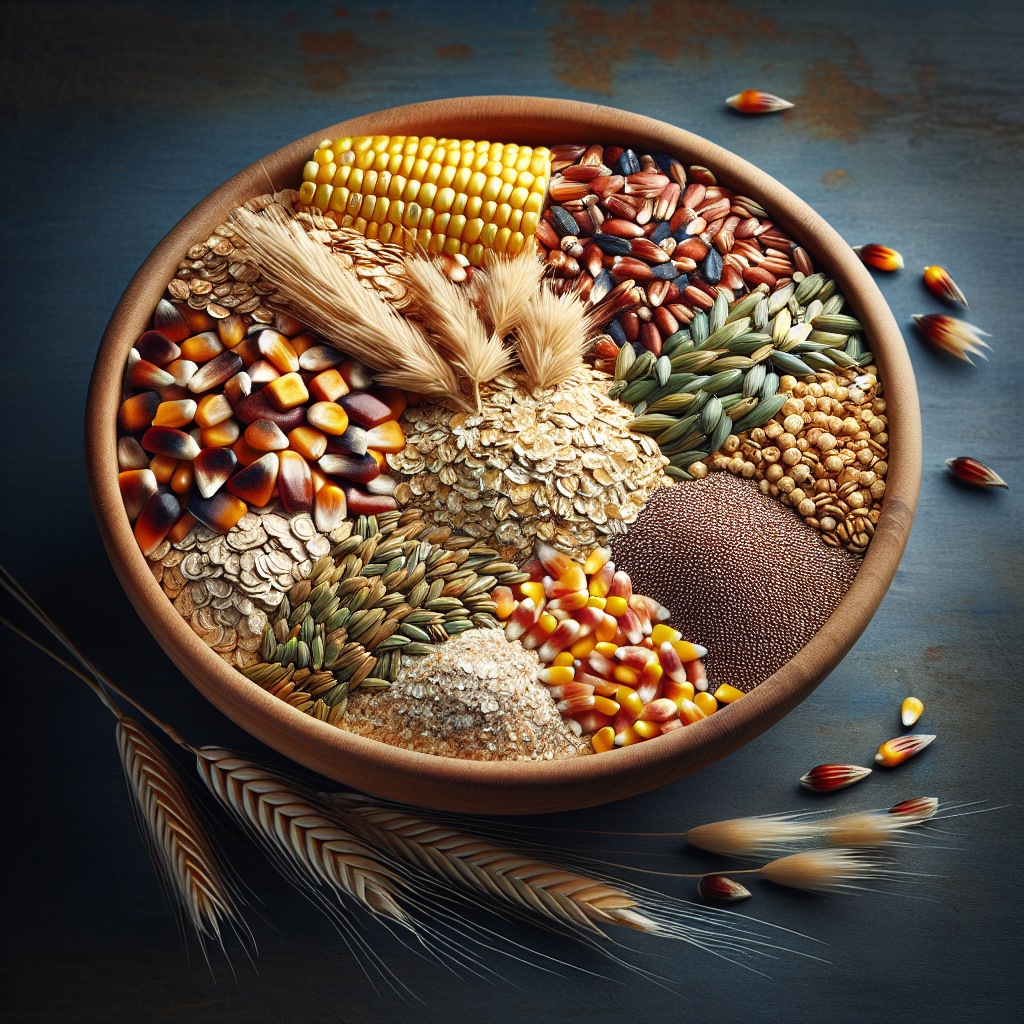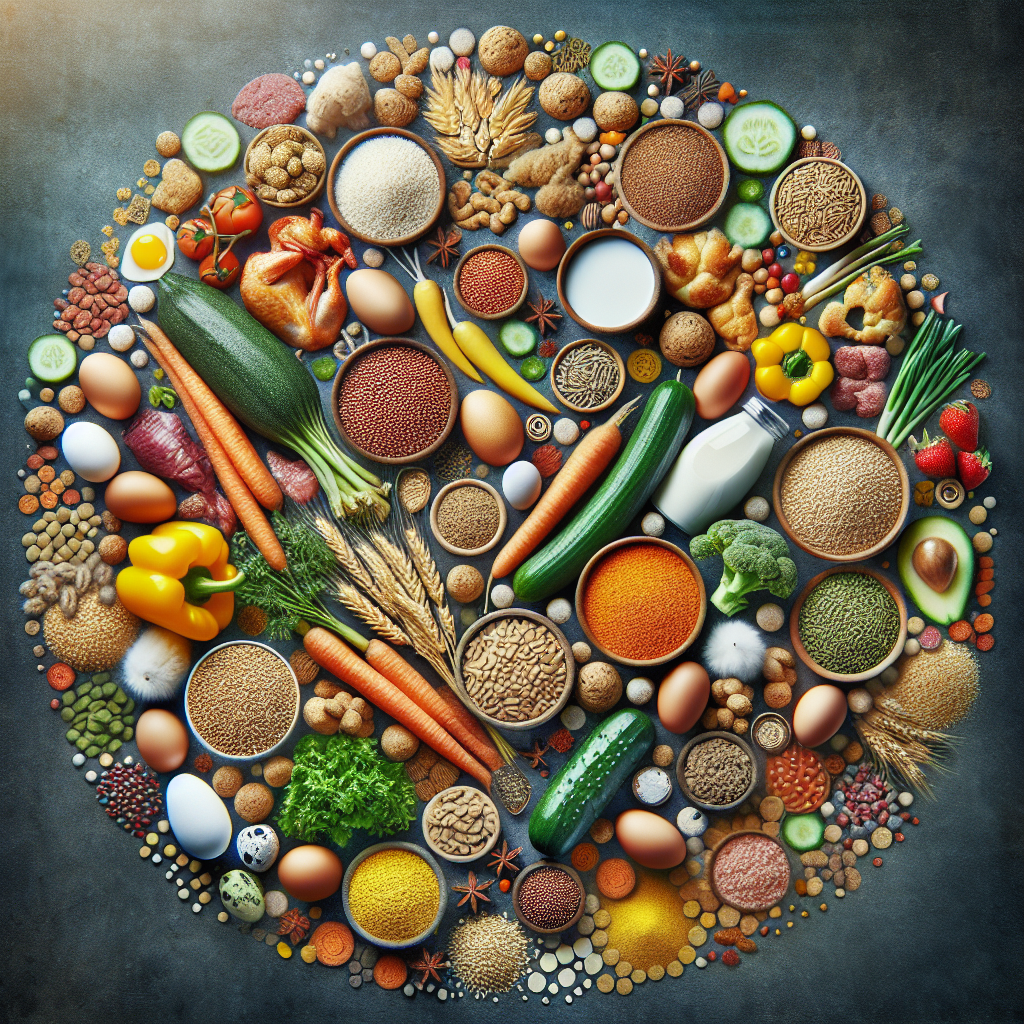If you’ve ever wondered about the importance of fiber in a chicken’s diet and which ingredients are rich in this vital nutrient, this article is here to enlighten you. Understanding the significance of fiber in a chicken’s diet is essential for their overall health and well-being. Not only does fiber play a crucial role in promoting proper digestion, but it also aids in weight management and prevents various health issues. To ensure chickens receive adequate fiber, certain ingredients in their diet come to the rescue. Stay tuned to discover the key ingredients that provide the necessary fiber for our feathered friends.
The Significance of Fiber in a Chicken’s Diet
Fiber is an essential component of a chicken’s diet, playing a crucial role in maintaining their overall health and well-being. It not only improves digestion and gut health but also prevents digestive disorders, reduces the risk of obesity, regulates blood sugar levels, and enhances feeding efficiency. By including sources of fiber in their diet, chicken owners can ensure that their flock remains healthy and happy.
1. Improves Digestion and Gut Health
One of the significant benefits of fiber in a chicken’s diet is its ability to improve digestion and promote a healthy gut. Fiber increases microbial diversity in the chicken’s gut, which is beneficial for their overall well-being. The presence of a diverse range of microbes helps in breaking down the food more effectively and aids in nutrient absorption.
Furthermore, fiber promotes the growth of beneficial gut bacteria, such as lactobacilli and bifidobacteria. These bacteria help in fermenting fiber, producing short-chain fatty acids (SCFAs) like acetate, propionate, and butyrate. SCFAs are not only a valuable source of energy for the chickens but also promote a healthy gut environment by maintaining the pH levels and inhibiting the growth of harmful bacteria.
2. Prevents Digestive Disorders
Including fiber in a chicken’s diet can also help prevent digestive disorders. The consumption of fiber-rich foods reduces the incidence of impacted crops, a condition in which food becomes lodged in the crop, causing discomfort and potential blockages. By promoting regular digestion, fiber ensures that the food passes through the digestive system smoothly, minimizing the risk of gastrointestinal blockages.
3. Reduces the Risk of Obesity
Obesity is a common health concern in chickens, leading to various health issues and decreased overall well-being. However, by incorporating fiber into their diet, chicken owners can effectively reduce the risk of obesity. Fiber-rich foods provide satiety and hunger control to chickens, helping them feel fuller for longer periods. This feeling of fullness prevents excessive overeating and promotes healthy weight management in the flock.
Additionally, a diet high in fiber supports healthy weight management by regulating the absorption of nutrients. Fiber slows down the digestion process, which in turn slows down the absorption of glucose, preventing sudden spikes in blood sugar levels. This regulation of blood sugar helps in preventing insulin resistance, a condition that can lead to obesity in chickens.
4. Regulates Blood Sugar Levels
Maintaining stable blood sugar levels is crucial for the overall health of chickens. Fiber in their diet plays a vital role in regulating these levels. By slowing down the absorption of glucose, fiber prevents sudden spikes and crashes in blood sugar levels. This steady regulation of blood sugar levels helps chickens maintain their energy levels and reduces the risk of metabolic disorders.
Additionally, fiber prevents insulin resistance, which occurs when the body’s cells become less responsive to the effects of insulin. Insulin is responsible for regulating blood sugar levels, and a disruption in this process can lead to imbalances. Including fiber in a chicken’s diet helps prevent insulin resistance and ensures the efficient functioning of their metabolic processes.
5. Enhances Feeding Efficiency
Feeding efficiency is an essential factor for chicken owners, both in terms of cost-effectiveness and sustainability. By including fiber in the diet of chickens, owners can enhance their feeding efficiency. Fiber increases nutrient absorption by improving digestion and promoting a healthy gut environment. This means that the chickens can extract more nutrients from their food, making their diet more efficient.
In addition, fiber also reduces feeding waste. During digestion, fiber adds bulk to the diet, resulting in increased stool formation. This increased stool volume ensures that the chickens excrete waste more efficiently, minimizing wastage of food and nutrients.
Sources of Fiber for Chickens
Now that we understand the significance of fiber in a chicken’s diet, it is crucial to explore the various sources of fiber that can be included in their diet. Here are some of the common sources of fiber for chickens:
1. Grains and Seeds
Grains and seeds are readily available sources of fiber for chickens. Some common grains and seeds that are high in fiber include oats, barley, wheat, flaxseeds, and chia seeds. These can be included in the chicken’s diet in the form of whole grains or as a part of commercially available feed.
2. Vegetables and Fruits
Vegetables and fruits are excellent sources of fiber for chickens, while also providing essential vitamins and minerals. Leafy greens like spinach, kale, and lettuce, as well as vegetables like carrots, broccoli, and bell peppers, are rich in fiber. Fruits like apples, berries, and melons are also great options. It is important to offer a varied selection of vegetables and fruits to ensure a diverse intake of fiber and nutrients.
3. Legumes and Beans
Legumes and beans are another valuable source of fiber for chickens. Chickpeas, lentils, kidney beans, and black beans are all excellent choices. These can be included in the diet in their cooked and mashed form or as part of commercially available feed.
4. Forage and Pasture Plants
Forage and pasture plants are natural sources of fiber for chickens and can be an essential component of their diet, especially for free-range flocks. These plants provide not only fiber but also a range of essential nutrients. Some common forage and pasture plants for chickens include alfalfa, clover, timothy grass, and ryegrass. These can be offered fresh or dried, depending on availability and season.
4.1 Alfalfa
Alfalfa is a nutrient-rich plant that is high in fiber. It provides chickens with essential vitamins and minerals while helping to maintain their digestive health. Fresh or dried alfalfa can be included in the chicken’s diet, either as a standalone feed or as part of a balanced diet.
4.2 Clover
Clover is another valuable source of fiber for chickens. It is rich in vitamins and minerals, making it an excellent addition to their diet. Fresh or dried clover can be offered to chickens, either as a part of their daily feed or as a treat.
4.3 Timothy Grass
Timothy grass is a commonly available grass that is high in fiber. It can be grown in the chicken’s living area or provided as dried grass. Chickens can readily consume timothy grass and benefit from its fiber content.
4.4 Ryegrass
Ryegrass is another nutritious grass that provides fiber to chickens. It can be offered fresh or dried, depending on availability. Including ryegrass in the chicken’s diet ensures they receive a good amount of fiber to promote their digestion and overall health.
In conclusion, fiber plays a significant role in a chicken’s diet. Its inclusion not only improves digestion and gut health but also prevents digestive disorders, reduces the risk of obesity, regulates blood sugar levels, and enhances feeding efficiency. By incorporating various sources of fiber, such as grains, vegetables, legumes, and forage plants, chicken owners can ensure the optimal health and well-being of their flock.




